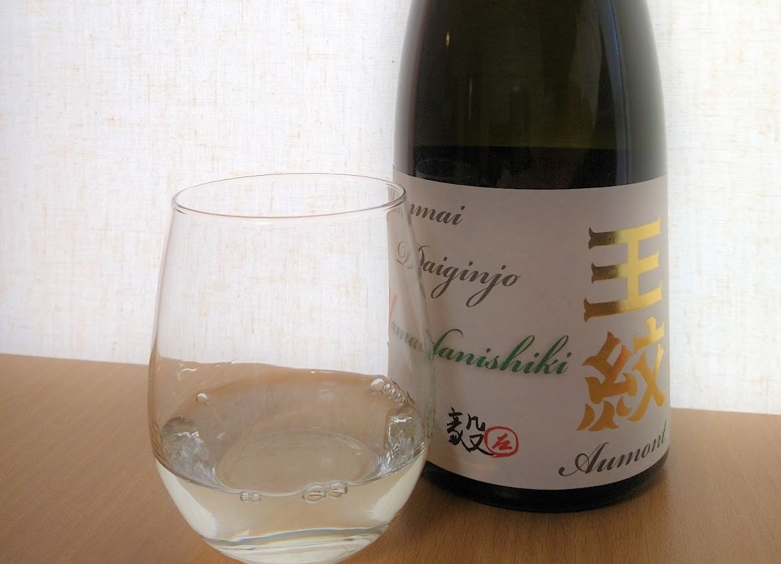
Aumont Midori – Elegance at First Glance
Ichishima Shuzo in Niigata Prefecture offers up this bottle of junmai daiginjo for review. It is made from Hyogo-grown Yamada Nishiki rice milled to just 35%, which was once considered the prime figure for daiginjo class sake. The label features gold embossing and tōji Takeshi Tanaka’s own stamp. The bottle has a long graceful neck, displaying a refinement not common in sake bottles. With the name (the kanji literally means “crest of the king”), presentation, and price of 7,700 yen, it is clear that Ichishima wants to present this as their flagship.
Ichishima explains on the label that this sake represents a major undertaking, as it is the first time in ten years that the tōji has used Yamada Nishiki, and doing so at this level of milling is a particularly powerful symbol. It appears that Tanaka tōji has been successful, since this first attempt at super premium Yamada Nishiki junmai daiginjo took the highest award in the the Junmai Ginjo division of the the 92nd Kanto Shinetsu Sake Appraisals, and Grand Gold at Spain’s CINVE 2021 sake appraisals.
In the glass, the sake is crystal clear, and the aroma soon makes itself known. It is a refined, complex one, offering the expected Yamada Nishiki jundai fruit notes, with hints of mango, apple, and some vanilla. It is relatively reserved, though, for this level of daiginjo, and does not overpower food.
The flavor is equally as refined and balanced. It presents smooth, superbly balanced sweet notes of marshmallow, tropical fruit, and savory hints of rice. The finish is clean and quick, leaving just a trace of enticing savoriness that invites another sip, and then another.
This is a relatively full-bodied sweet sake. The back label features a sliding scale of sweet (ama)-dry (karakuchi) and rich (nojun) – crisp (tanrei), and puts this one at the sweet/rich extreme. Given that Ichishima is a Niigata brewery, this is the exact opposite of what one would expect from the area’s tanrei karakuchi reputation. However, I would also caution that the people who wrote that label are also working in that same region. It may be on the nojun amakuchi extreme for Niigata, but not for, say, Saga. For those used to Western Japan’s richer brews, this is still fairly light.
I drank this chilled from a wine tumbler with a dinner of chicken breast and miso soup, and it balanced perfectly. It didn’t clash, and it didn’t lose out. As a junmai daiginjo, one might expect delicacy and fragility, but this one had plenty of backbone to keep up with meals. I have the idea that this might actually work well when warmed up to nurukan (35°-40° C) or so, with that firm underlying structure.




